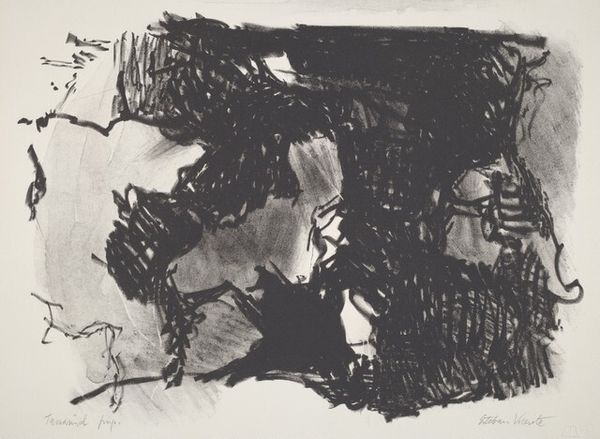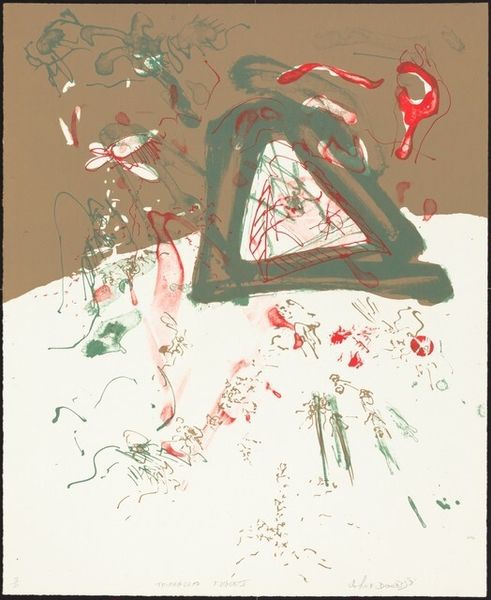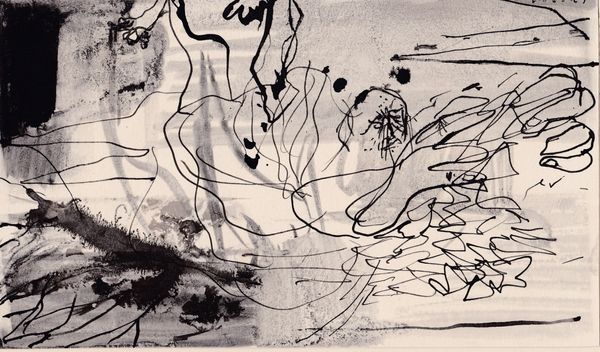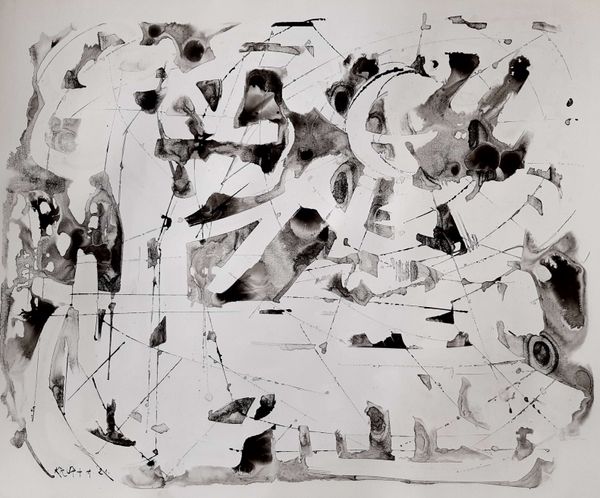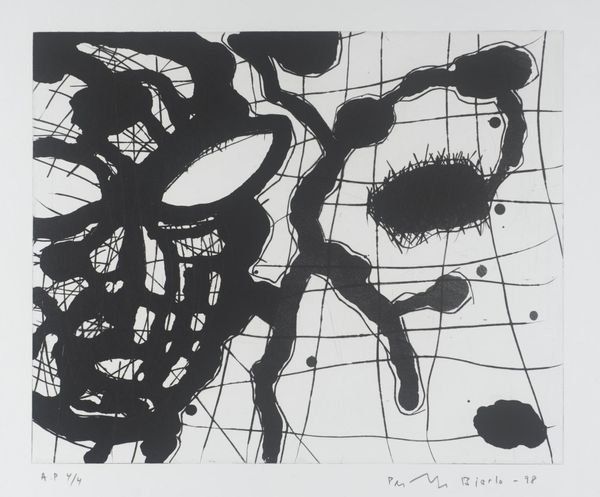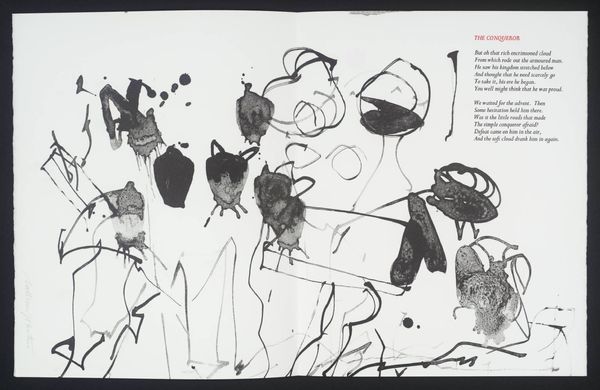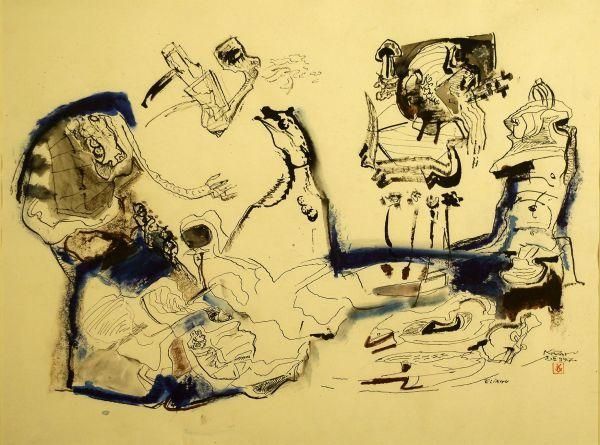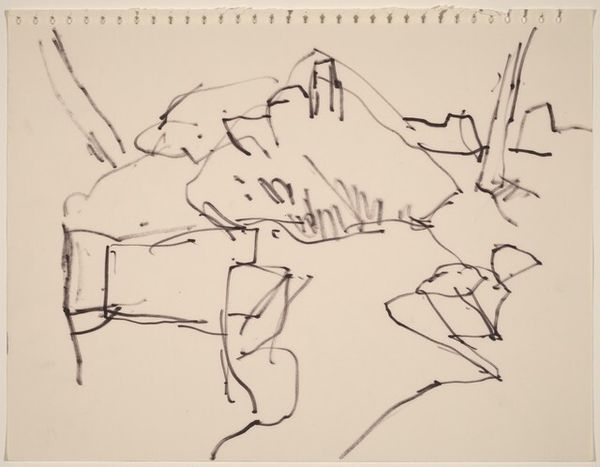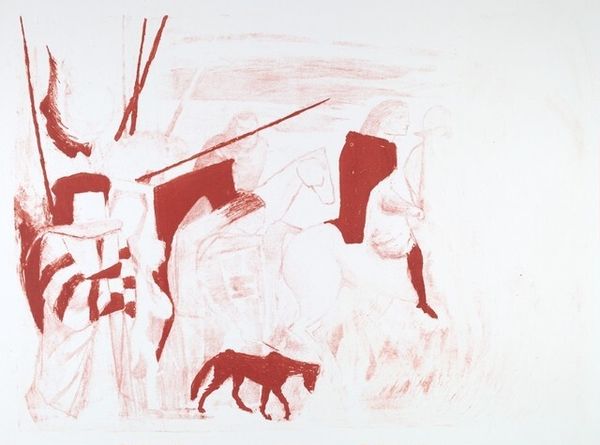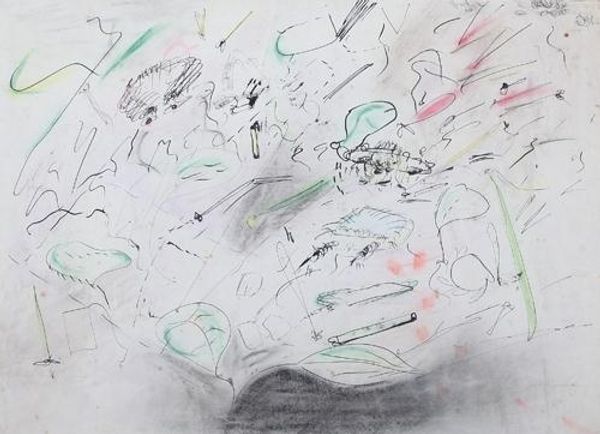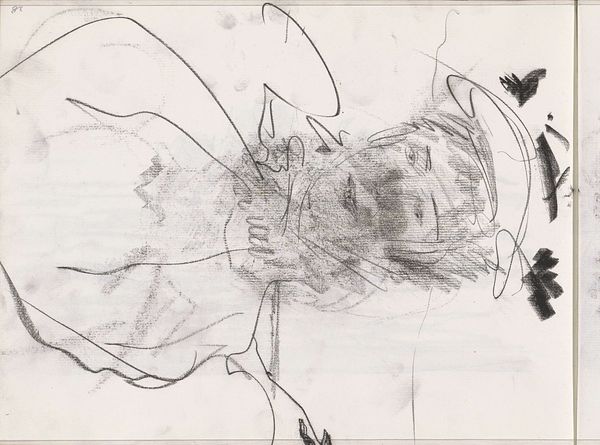
drawing, print, paper, ink
#
portrait
#
drawing
# print
#
pen illustration
#
figuration
#
paper
#
ink
#
genre-painting
Dimensions: image: 237 x 336 mm sheet: 254 x 356 mm
Copyright: National Gallery of Art: CC0 1.0
Curator: Fairfield Porter's print, "Child Writing (Lizzie Drawing)," created around 1960 or 1961, presents a rather stark portrayal, doesn't it? The ink on paper gives a graphic sensibility, highlighting its minimalist features. Editor: Graphic is the word! The bold ink outlines definitely give a sense of immediacy. There’s almost an unsettling contrast between the innocence of the subject and the rawness of the execution. The choice of sparse, dark ink strokes to depict a child engaged in an activity usually linked with youthful exploration creates an anxious tone. Curator: It’s interesting how Porter simplifies form to its very essence. Consider the formal relations between the flattened perspective, the bare suggestion of furniture in the background and then that play of positive and negative space creating form, the dress with its light floral patterning versus the dark swathes of hair around the face. I wonder, what does it mean to present form in this way? Editor: I see this print and wonder about the gaze directed upon children, girls in particular. There is an act of observing and objectifying taking place; that act is then layered in with cultural values of the 60’s and then rendered for consumption. To present an artistic observation of that transaction leaves me wondering about agency, authorship, spectatorship, and the politics embedded in those points of view. Curator: Do you feel there is some underlying tension created by the rapid strokes? And this is further intensified, would you say, by the very visible printing imperfections and smudges? How can those add another layer to a potential narrative? Editor: I think you nailed it: the printing "imperfections," rather than being a mere aesthetic aspect, subtly allude to deeper human experiences around authenticity and childhood. The child appears introspective and contemplative, inviting questions about youth identity development. The choice to portray such a common, quiet scene becomes rather subversive, subtly critiquing the societal expectations that quietly suffocate youth. Curator: Viewing "Child Writing (Lizzie Drawing)" reminds us how simple forms can communicate complex feelings through studied formal organization. Editor: For me, it’s about uncovering the deeper social meanings interwoven into the fabric of seemingly everyday observations of the human condition and experiences around girlhood.
Comments
No comments
Be the first to comment and join the conversation on the ultimate creative platform.
